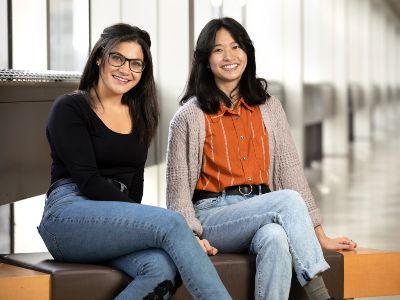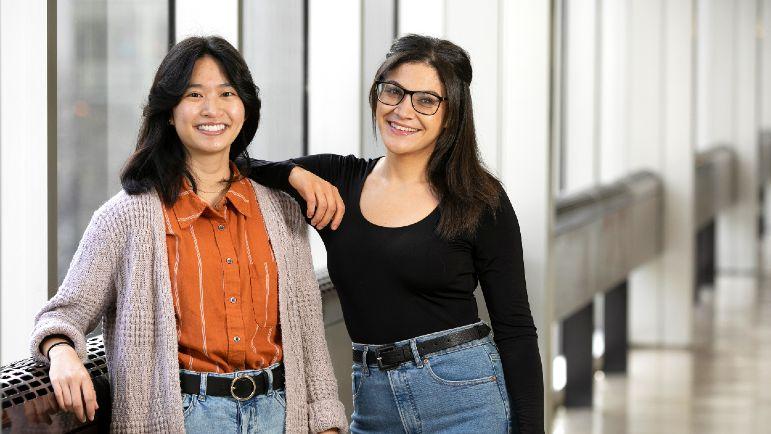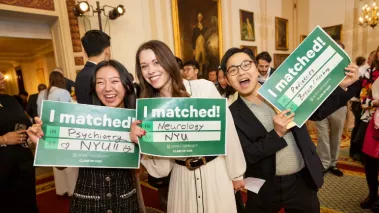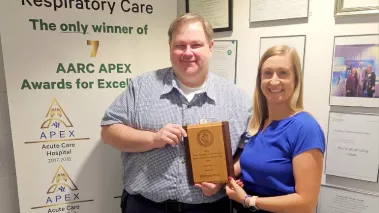Laura Tran and Diana Abbasi, students in the Integrated Biomedical Sciences PhD program at Rush University, had an opportunity to merge their research backgrounds with creativity as writing interns for the Chicago Council on Science and Technology, or C2ST.
In an information age highly dependent on digital forms of mass communication, research communities are being challenged to use virtual platforms to help the general public understand their findings. Tran and Abbasi met this challenge by developing content for C2ST, engaging with research and translating its value in ways that are easy to digest for diverse audiences.
Tran and Abbasi recently shared their experience with their experiential learning opportunity.
Tell us about the Chicago Council of Science and Technology and the experience you had there.
Laura Tran: C2ST is a nonprofit organization whose goal is to engage the Chicago community with science. We helped them to disseminate this science that we all love to the public in an accessible manner, whether it was blog posts or YouTube videos, and similar content.
Diana Abbasi: It was our job to convey the research provided to us to the public in a way that made it interesting and understandable. Every week we would meet with our two internship coordinators, who would assign us to a range of communications. projects. Sometimes they would give us themes and topics, but other times it was our choice. We were able to take a topic we'd like to write about, interview an expert and highlight their research. We learned about the inspiration behind their work and how they implemented their research
LT: Diana and I were also trained on how to effectively use social media and engage audiences through Twitter, Instagram and Facebook.
What drew you to this opportunity? Do you have any communications background or have any interest in it?
DA: As a researcher in the field, the barrier between research and the public eye is evident to me. It’s crucial for researchers on our end to break that barrier and do more effective outreach to the public so there’s more communication between fields. I’ve especially noted this throughout the course of the COVID-19 pandemic. There have been many misconceptions about research, and many people still don’t know what to believe. I think the science community sometimes fails to help the public understand exactly what’s going on, because it’s a different language. If you aren’t involved with science and research every day, it can be hard to connect with and understand.
LT: In my experience, many researchers get entrenched in the fine points of the research that they live and breathe, forgetting that not everyone is familiar with it. It’s important to communicate findings effectively with others so they can understand your research and get excited about it.
How would you compare the fields of communications and lab research?

DA: I go about writing scientific literature much differently than how I write these blog posts. If it’s a research publication, you know scientists are the ones who will be reading it, so you can include every detail. With a public audience, you focus on giving them the gist, what they can take out of it and why it’s so interesting or important to care about. It’s different.
LT: It's very different. You need to take a step back and remember you can’t approach writing for mass communications the same way you would approach writing for specific research communities. You have to break the research down into more digestible parts that would make it easier for the public to understand the general picture.
Did you get a lot of hands-on guidance while putting together communications material for C2ST?
LT: We had a fair amount of guidance, especially from our coordinators who helped facilitate the writing process for us. We enjoyed having a new training session with someone new every few weeks and learning a bit about the creative writing process or dabbling in content creation for social media. For example, if it’s for Twitter, you ask yourself how you can creatively condense information and how that approach is different from writing a blog post.
What are your greatest takeaways from the experience?
DA: The opportunity to be immersed in science outside of what I do on a daily basis was valuable. Most of the things I was reading or writing about were things I hadn’t previously read or had knowledge of. I got to expand my horizons and ponder my interests in science. And overall, I enjoyed the idea of writing or talking to someone about science to help them understand its value. I improved how I communicate it to other people, which was my main goal.
LT: It was nice to dabble in subjects that I was interested in but didn’t know a whole lot about. For example, I'm really interested in microbiology, but I don’t have significant experience with it in my current research. I was able to highlight some of that in the internship experience, researching a "bug of the week" and discussing what E. coli is one week and salmonella the next.
DA: Overall, it was a great experience. The people who run the organization are all so lovely, helpful, and kind. I think this would be a great experience for anyone interested.
LT: It was nice to be surrounded with people who, like us, are passionate about science. Members of our group were all in similar fields, but our coordinators offered expertise in a range of backgrounds. It was very interesting to learn from people with many different experiences. We came together from different areas of science and collaborated to curate all this cool content for the public.







